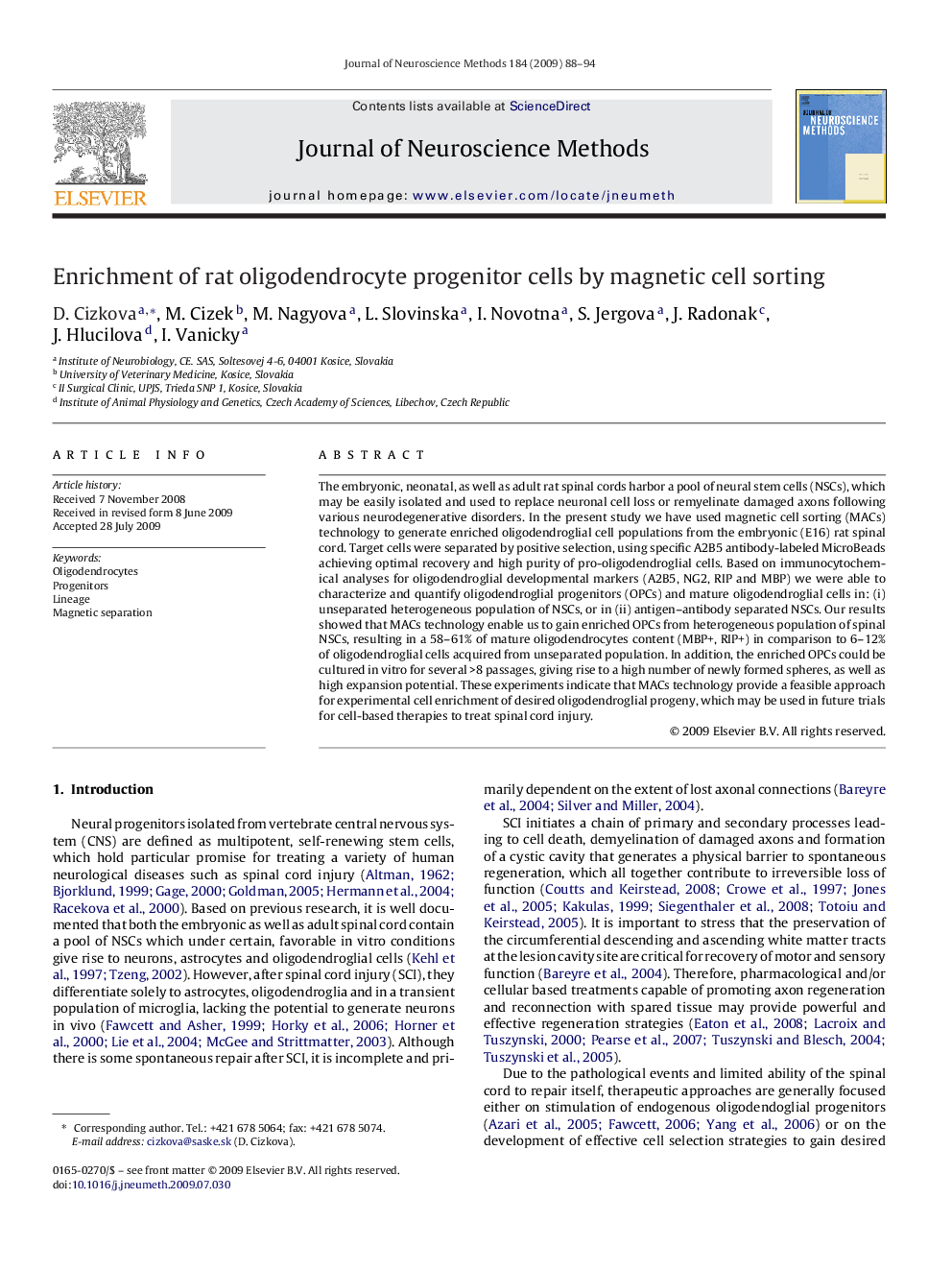| Article ID | Journal | Published Year | Pages | File Type |
|---|---|---|---|---|
| 4335693 | Journal of Neuroscience Methods | 2009 | 7 Pages |
The embryonic, neonatal, as well as adult rat spinal cords harbor a pool of neural stem cells (NSCs), which may be easily isolated and used to replace neuronal cell loss or remyelinate damaged axons following various neurodegenerative disorders. In the present study we have used magnetic cell sorting (MACs) technology to generate enriched oligodendroglial cell populations from the embryonic (E16) rat spinal cord. Target cells were separated by positive selection, using specific A2B5 antibody-labeled MicroBeads achieving optimal recovery and high purity of pro-oligodendroglial cells. Based on immunocytochemical analyses for oligodendroglial developmental markers (A2B5, NG2, RIP and MBP) we were able to characterize and quantify oligodendroglial progenitors (OPCs) and mature oligodendroglial cells in: (i) unseparated heterogeneous population of NSCs, or in (ii) antigen–antibody separated NSCs. Our results showed that MACs technology enable us to gain enriched OPCs from heterogeneous population of spinal NSCs, resulting in a 58–61% of mature oligodendrocytes content (MBP+, RIP+) in comparison to 6–12% of oligodendroglial cells acquired from unseparated population. In addition, the enriched OPCs could be cultured in vitro for several >8 passages, giving rise to a high number of newly formed spheres, as well as high expansion potential. These experiments indicate that MACs technology provide a feasible approach for experimental cell enrichment of desired oligodendroglial progeny, which may be used in future trials for cell-based therapies to treat spinal cord injury.
